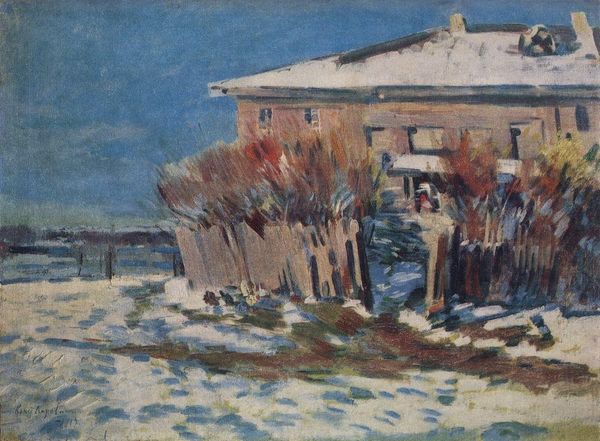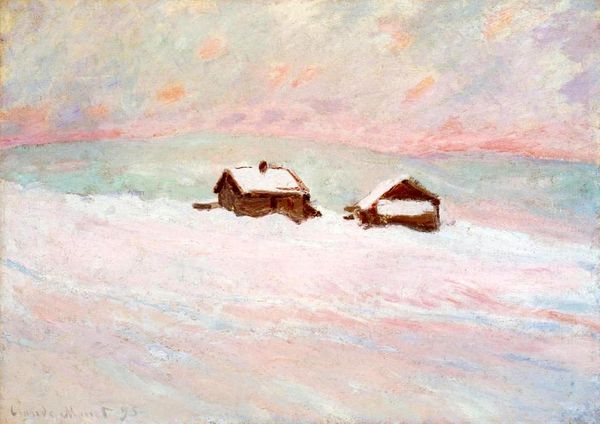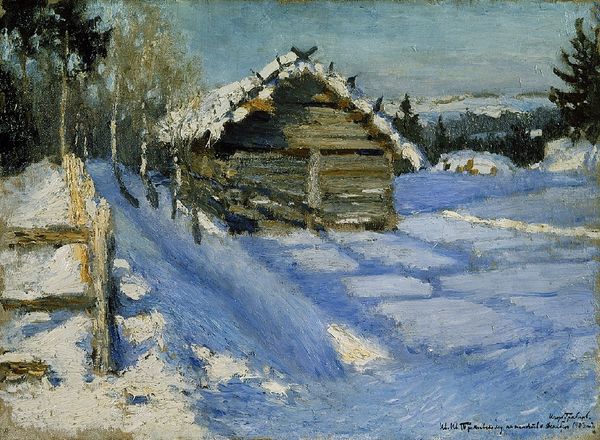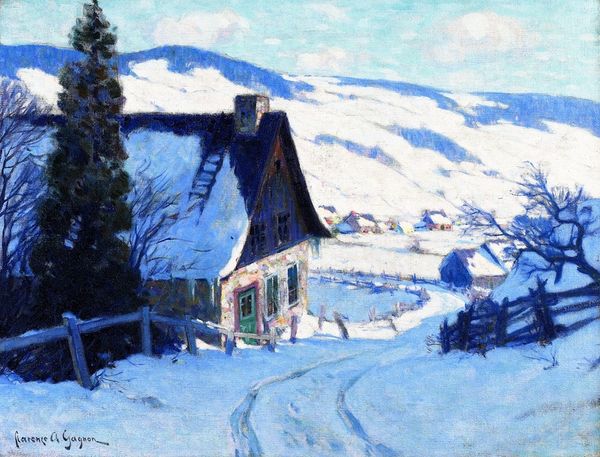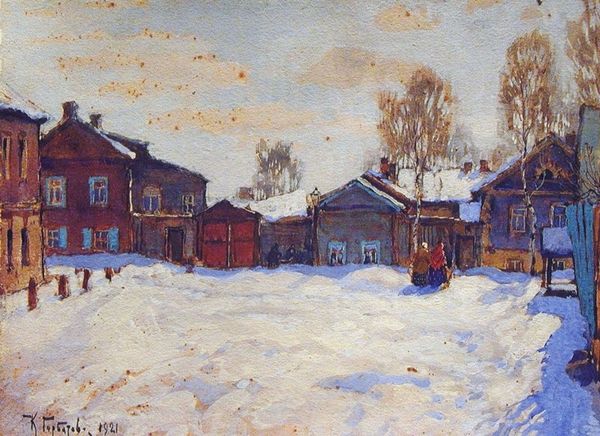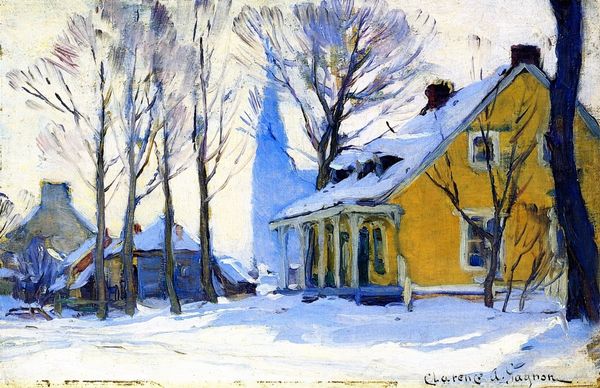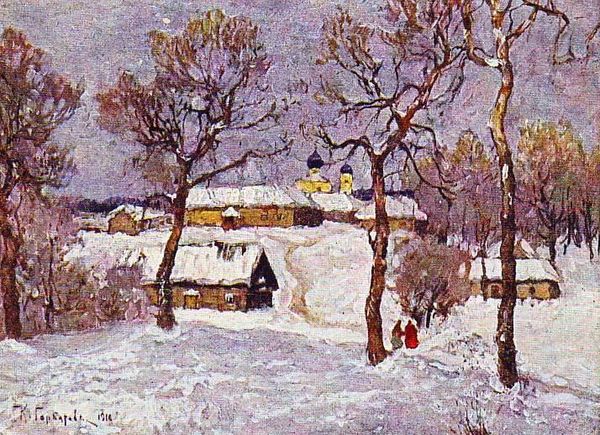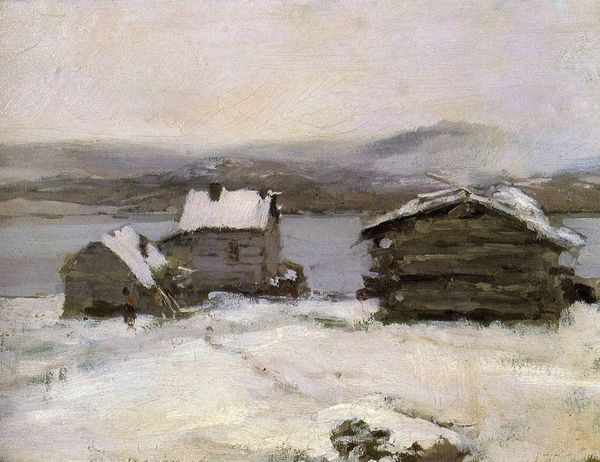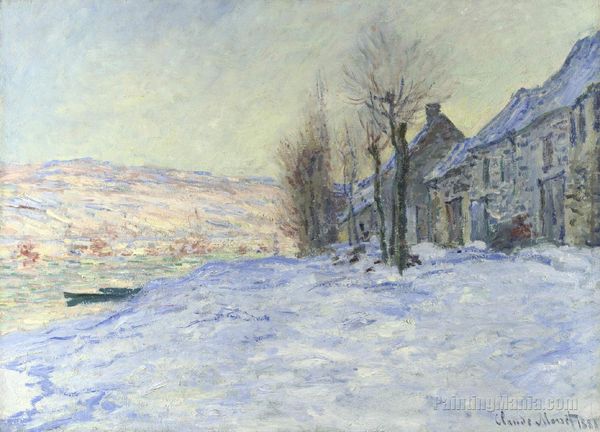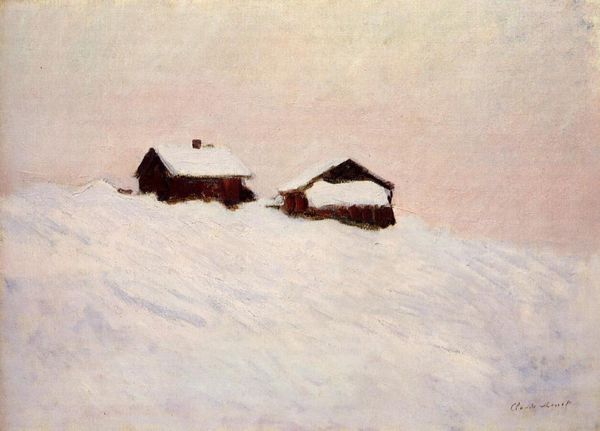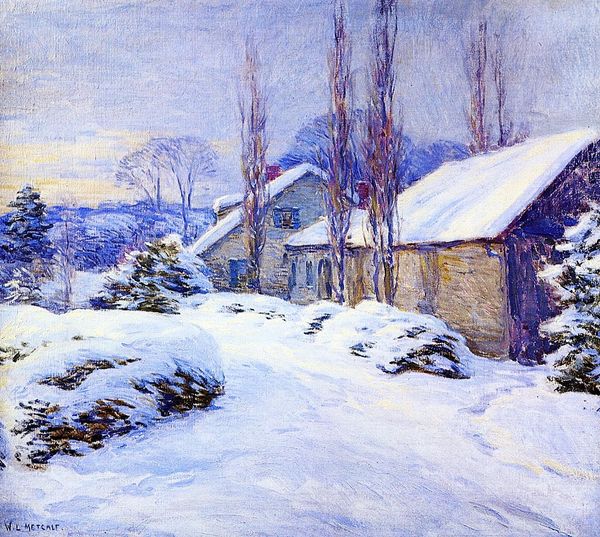
Copyright: Public domain
Editor: Here we have Claude Monet's "Red Houses at Bjornegaard in the Snow, Norway" from 1895. It's an oil painting, and my first impression is the contrast between the bright red buildings and the muted blues and whites of the snow-covered landscape. What’s your interpretation of this painting? Curator: It's interesting how Monet, usually associated with France, engages with a Norwegian landscape. Consider this painting in relation to the broader sociopolitical context of the late 19th century. How might his depiction of these remote, intensely red houses challenge the dominant, often exclusionary, narratives of the art world centered in urban European capitals? Editor: That's a great point! I hadn’t considered how unusual it was for Monet to paint Norway. I was mostly just reacting to the colors and the feeling of the scene. Curator: Think about what those colors evoke. Red, in particular, has such charged associations – passion, revolution, but also, traditionally, danger. The bold redness against the cold landscape could be read as a commentary on the resilience of human presence even in harsh conditions, a nod to the social and economic realities of those who lived in such places. It questions the role of art to represent a world outside of itself: an external challenge. Editor: So, it’s not just a pretty picture, but maybe a statement about the people living there? Curator: Exactly. Monet’s Impressionism wasn’t simply about capturing fleeting light. It also subtly reflected a rapidly changing world. The choice to paint these particular houses in that particular landscape contributes to a visual dialogue concerning peripheral communities, perhaps commenting on their position within broader societal structures and power dynamics of the time. Editor: I guess I always thought of Impressionism as just being about aesthetics. Now I see it can have so much more depth. Curator: Precisely. By analyzing the visual language of a painting, its style and social environment, we can uncover hidden layers of meaning. The aesthetic choices that artists make –the colours they select, the perspectives they offer– open dialogues on culture, philosophy, gender, and other realities that impacted our predecessors. This exercise is paramount if we intend to promote art appreciation and broaden our cultural sensibility as 21st-century art consumers. Editor: This has really changed how I'll look at Impressionist paintings from now on. Thanks!
Comments
No comments
Be the first to comment and join the conversation on the ultimate creative platform.
